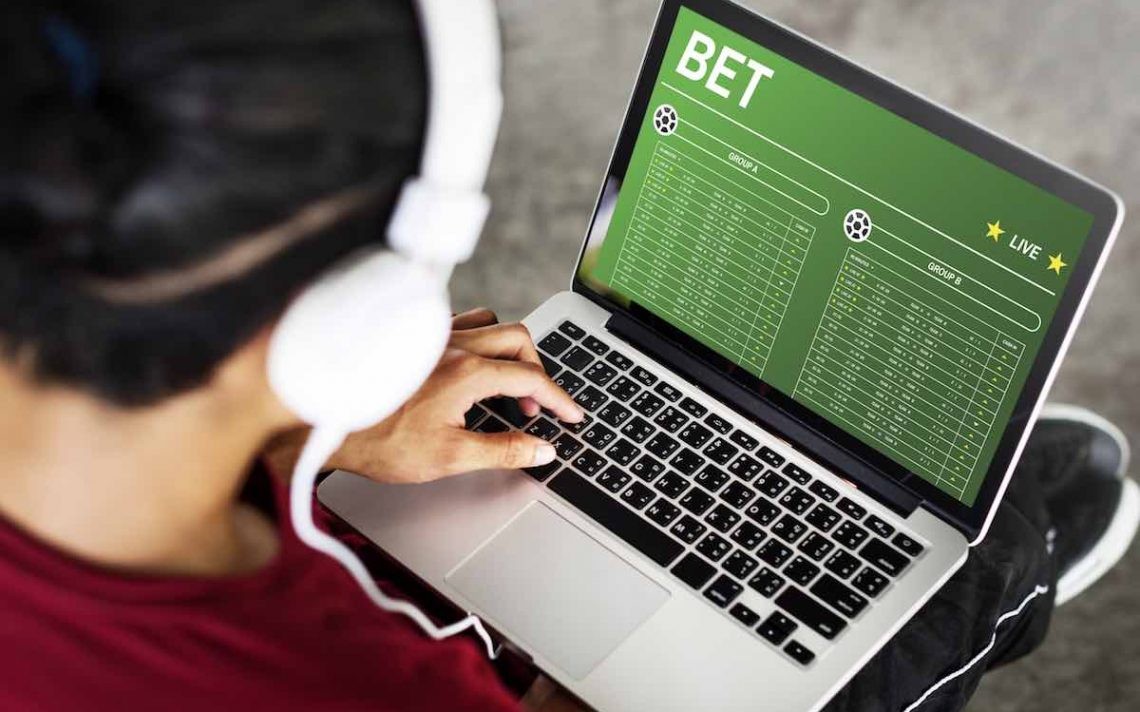Qinshift iGaming – Upscale sportsbook product development

Qinshift is on the forefront of the iGaming industry for more than 15y, being one of the pioneers to develop an online sports betting and casino platform, based on advanced AI solutions.
Sports betting is on the rise, presenting both opportunities and challenges for the industry, that need to be managed simultaneously. In the quest of supporting our valued GameTech customers, Qinshift has built valuable experience on market trends, consumer preferences, and regulatory developments. We’ve been working both independently and assisting the delivery roadmap of our customers, being on the forefront of innovation with our forward-thinking domain experts.
Besides collaborating on building various platforms for sports betting, casino and lotteries, recently we’ve been engaged to develop a stellar sport betting product. Utilizing data-driven decision-making, user-centric design and ensuring smooth and enjoyable player journey, while embracing innovation beyond traditional betting, won a lot of sympathies, even before the UAT stage.
An accumulator bet provides personalization, increased interaction and based on the functionality and available markets – a unique betting experience. These attributes bring complexity, which is augmented with the regulatory requirements, since compliance is paramount.
Team setup
One pillar in the team ensures that the product is not only visually appealing but also highly functional. The other part is concentrating on the development of API services and handling the backend aspects of the service, including the implementation of complex algorithms and matrices convolutions, ensuring the highest standards of performance and functionality. The team is complemented by seasoned TL / Product Owner and quality assurance engineers, who are crucial in their field of operations.
1. Analysis stage
We’ve started with analysis of business processes and master data, while mapping important integrations points. Introducing Techquilibrium: Traversing the Balance Between AS-IS and TO-BE Business Processes and on the top of it we’ve cross-checked The 5 Success Habits from previous successful projects… all resulted with create business process.
2. Solution Initialization
For a simple and clean architecture - next in line is the creating project solution, followed by preparing playground, executing all the knowledge transfer sessions, Mockup data requests, Implementing Role based User Interfaces and User Experience.
3. Implementation of Features
Product component, defining the web app user workflow, implement the odds services, and the ways compatibility and bringing this to the web application component, setting up the API Process tracking and the sport Math Service integration.
4. Monitor and Optimize
Process Flow
1. Odds Calculation
Using the collected selection inputs and the retrieved market data, the platform performs Ways Compatibility. This algorithm evaluates which Ways are compatible with the selected Ways and which are redundant.
2. Odds display
Once the odds calculation is complete, the platform displays the real-time odds for the custom bet to the user. The odds are typically presented alongside the selections in the product interface, providing transparency and allowing the user to evaluate the potential payout and risk associated with their bet.
3. Dynamic updates
As the market data changes (e.g., due to shifts in odds, match developments), the platform continuously updates and recalculates the odds in real-time. This ensures that the user has access to the most up-to-date odds information before placing their bet.
4. User decision-making
Based on the displayed real-time odds, the user can assess the attractiveness of their custom bet and make informed decisions. They may choose to modify their selections or proceed with the current bet based on the odds presented.
Calculation Process Flow
1. Probability assessment
The odds calculation process begins with assessing the probabilities associated with each selected betting market within the custom bet. This involves analyzing various factors, such as historical data, team or player performance, current form, injuries, and other relevant information.
2. Outcome combinations
For custom bets that involve multiple selections, the odds calculation process involves evaluating all possible outcome combinations. This includes considering the various scenarios that can arise from the chosen selections and calculating the probabilities of each combination occurring.
3. Mathematical models
Use mathematical models or algorithms to determine the odds based on the assessed probabilities. These models may consider factors such as historical trends, market demand, and the platform's desired margin or overround (to ensure profitability).
4. Margin adjustment
To account for the platform's profit margin, the calculated probabilities are adjusted. This adjustment ensures that the total implied probabilities of all possible outcomes exceed 100%. The extent of this adjustment depends on the specific platform's business strategy and market competition.
5. Odds Conversion
The adjusted probabilities are then converted into odds format, such as fractional odds (e.g., 3/1) or decimal odds (e.g., 4.00). The odds represent the potential payout for a winning bet relative to the stake.
6. Display and Presentation
Once the odds are calculated and converted, they are displayed to the user within the product interface. The odds are typically associated with each selection and presented in a clear and understandable format, allowing users to assess the potential returns for their custom bet.

Rule-Based Engine
One of the systems where our team excelled is - defining and managing rules, evaluating them against user selections, and providing appropriate feedback.
1. Rule Definition
Start by defining the rules that govern bet compatibility within your system. These rules can be expressed in various ways, such as JSON, XML, or custom DSL (Domain-Specific Language).
2. Rule Evaluation
Develop a rule evaluation engine that interprets and evaluates these rules. The engine should be capable of dynamically processing rules and making compatibility decisions in real-time.
3. Data Model
Create a data model to represent rules and their associated metadata. This model should include fields for rule ID, name, description, and the actual rule expression.
4. User Interface Integration
Integrate the rule engine with your user interface, specifically the component where users select and build their betslips. As users make selections, the rule engine evaluates the compatibility of the selections.
5. Feedback Mechanism
Implement a user-friendly feedback mechanism that informs users why their selections are compatible or incompatible. Clearly communicate which rule(s) are violated and suggest alternative selections when possible.
6. Testing and Validation
Thoroughly test the rule engine to ensure it correctly evaluates rules and provides accurate feedback for various scenarios. Consider using automated unit testing and validation with different rule sets.
Compatibility Rules
Qinshift team has made a significant progress towards the compatibility rules. In the context of a betting software module, they are a set of guidelines and logic that determine which bets can be combined on a betslip and which combinations are not allowed. These rules are essential for ensuring that users create valid and meaningful betslips while preventing incompatible or contradictory selections.
1. Bet Types Compatibility
Different types of bets (e.g., single bets, accumulators, system bets) may have different compatibility rules. For instance, singles are generally compatible with any other bet type, while some combination bets have specific requirements.
2. Event Compatibility
Consider whether bets are related to the same sporting events or matches. Bets related to different events may be incompatible on the same betslip.
3. Market Compatibility
Betting markets within the same event can also have compatibility rules. For example, you might allow bets on the outcome of a soccer match and the number of goals scored but disallow bets on the same team's victory and defeat in the same match.
4. Outcome Compatibility
In some cases, certain outcomes within the same market may be incompatible. For instance, you might disallow bets on both teams winning in a soccer match.
5. Min and Max Selections
Define the minimum and maximum number of selections that can be added to a betslip. This helps prevent overly complex or large combinations.
6. Specific sports and event rules
Some sports or events may have unique compatibility rules based on their characteristics. For example, in tennis, you might allow bets on the match winner and total games played but disallow bets on both players winning the same match.
7. Market Constraints
Consider market-specific constraints, such as maximum stake limits or odds restrictions, which can affect the compatibility of selections.
8. Exclusivity rules
Define rules that prevent contradictory bets. For example, you might disallow bets where the total number of goals in a soccer match exceeds the combined score of the two teams' goals.
9. Conflicting Outcomes
Identify outcomes that conflict with each other. For example, you might disallow bets on a soccer match that both teams will score and that neither team will score.
Responsible Gambling and AI
On another track, multiple customers have asked to work together on AI system(s), which promote sustainable gaming practices. AI algorithms can analyze player behavior patterns, identifying signs of excessive gambling, and changes in behavior. We are certain that these models will evolve with the industry and is becoming widely considered. At the same time, everyone should work together in providing the right assessment which includes technology as well.
In conclusion, sports betting product development is a thrilling journey—one that combines innovation, strategy, and a deep understanding of the audience. Those who dare to lead, innovate, and prioritize responsible practices will shape the future of this exhilarating industry.
